
The Busy Employer’s Guide - Asia Pacific
1
The Busy Employer’s Guide - Asia Pacific:
A quick reference guide to key employment law provisions
inAustralia, China, Hong Kong, Indonesia, Japan, Malaysia,
Philippines, Singapore, Taiwan, Thailand and Vietnam

The Busy Employer’s Guide - Asia Pacific
2
Introduction
Welcome to The Busy Employer’s Guide - Asia Pacific, a quick regional reference tool for employers
and human resources professionals providing summary overviews of key provisions covering
important aspects of the employment life cycle.
Drawing from the expertise of our regional Employment & Compensation team, consisting of
over 80lawyers, based in 12 countries in Asia Pacific, this Guide provides a macro perspective on
key employment laws across the region, enabling the reader to quickly gauge the complexity of
ajurisdiction and factor in what challenges must be navigated as a result.
The Busy Employer’s Guide - Asia Pacific is but one of our growing suite of sophisticated resources,
developed exclusively for the benefit of our clients, as part of our constant goal of providing the
highest quality of service.
We look forward to continuing our partnership with you in Asia Pacific and beyond, guiding you
through this fascinating, complex and constantly evolving legal landscape.
Michael Michalandos
Chair, Asia Pacific Employment and Compensation
General disclaimer: The content in this document does not serve as legal advice. Please consult with counsel accordingly.

The Busy Employer’s Guide - Asia Pacific
3
Transfers .......................................................................................................... 4
Consent to transfer ..............................................................................................................4
Assumption of responsibilities ..........................................................................................4
Employment Discrimination ...........................................................................5
Prohibited grounds for employment discrimination per country
Bullying .............................................................................................................7
Countries with laws on bullying and risk levels for regulation per jurisdiction
Sexual Harassment ......................................................................................... 8
Countries with laws on sexual harassment and risk levels for regulation
perjurisdiction
Sickness and Injury ......................................................................................... 9
Statutory entitlements, work injury insurance and protection from termination
Terminations ...................................................................................................11
How difficult is it to terminate employees in Asia Pacific? .......................................11
Lawful grounds for termination ...................................................................................... 12
Notice periods for termination ........................................................................................ 13
Protected employees .......................................................................................................... 14
Redundancies: Consultation requirements ................................................................... 15
Key Contacts ...................................................................................................16
Contents

The Busy Employer’s Guide - Asia Pacific
4
Transfers
A quick guide to conditions under which employees may transfer from a seller to a buyer, looking at which countries require the
employees’ prior consent; a buyer company’s responsibilities in relation to recognition of prior service; and the offering of no less
favorable terms to the employees of a seller company.
Consent to transfer
Employee consent required:
Vietnam,Taiwan, Philippines,
Malaysia, Australia, Thailand,
China, HongKong, Indonesia,
Japan
Exceptions:
• Japan - if the asset transfer
is done by way of a
corporate split or a merger
• Hong Kong - if the
ownership of an employing
entity changes but the
employment relationship
isunaffected (no transfer,
no consent required)
• Singapore - transfer
is automatic for most
employees
• Vietnam - transfer is
automatic in a merger
Assumption of responsibilities
Is the buyer company required
torecognize the prior service
ofemployees with the seller?
Hong Kong
Malaysia
1
(EA Employees)
Taiwan
Indonesia
4
Singapore
Thailand
6
Hong Kong
7
Indonesia
8
Singapore
Thailand
Hong Kong
Australia
Indonesia
12
Malaysia
13
Singapore
Australia
China
2
Malaysia
3
(Non-EA)
Japan
5
Philippines
Vietnam
Australia
China
Japan
9
Philippines
Malaysia
10
Taiwan
11
Vietnam
China
Japan
Philippines
Taiwan
Thailand
14
Vietnam
Is the buyer company required
tooffer“no less favorable terms”
tothesellercompany’s employees?
Must the offer from the buyer company
be on “no less favorable terms” to avoid
paying severance?
1 Recognition of prior service is only required where severance is not paid and the employees
agree to the transfer.
2 Recognition of prior service is only required where severance is not paid and the employees
agree to the transfer.
3 It is recommended to recognize prior service in order tosecure employee’s consent.
4 Unless the seller terminates the employment and gives theirtermination pay before
theseller hiresthem.
5 It is recommended to recognize prior service in order tosecure employee’s consent.
6 The new employer is legally required to assume all rights and responsibilities for the
transferred employees.
7 A new offer of employment on terms which are “no less favorable” is only required
whereseverance is not paid and the employees agree to the transfer.
8 Unless the seller terminates the employees and gives their termination entitlements before
the seller rehires them.
9 It is recommended to offer no less favorable terms in order to secure employee’s consent.
10 For EA Employees, if the buyer does not offer “no less favourable terms”, the seller will need
to makepayment of statutory termination benefits. For Non-EA Employees, they will be
lessinclined to migrate to the buyer entity.
11 In practice, the buyer company will usually offer “no less favorable terms” to the seller
company’s employees.
12 If transferred without termination of employment.
13 For EA and Non-EA Employees.
14 Severance pay is required only when there is a termination of employment, i.e.,when the
employee does not consent to the transfer.
YES YES
YES
NO NO NO
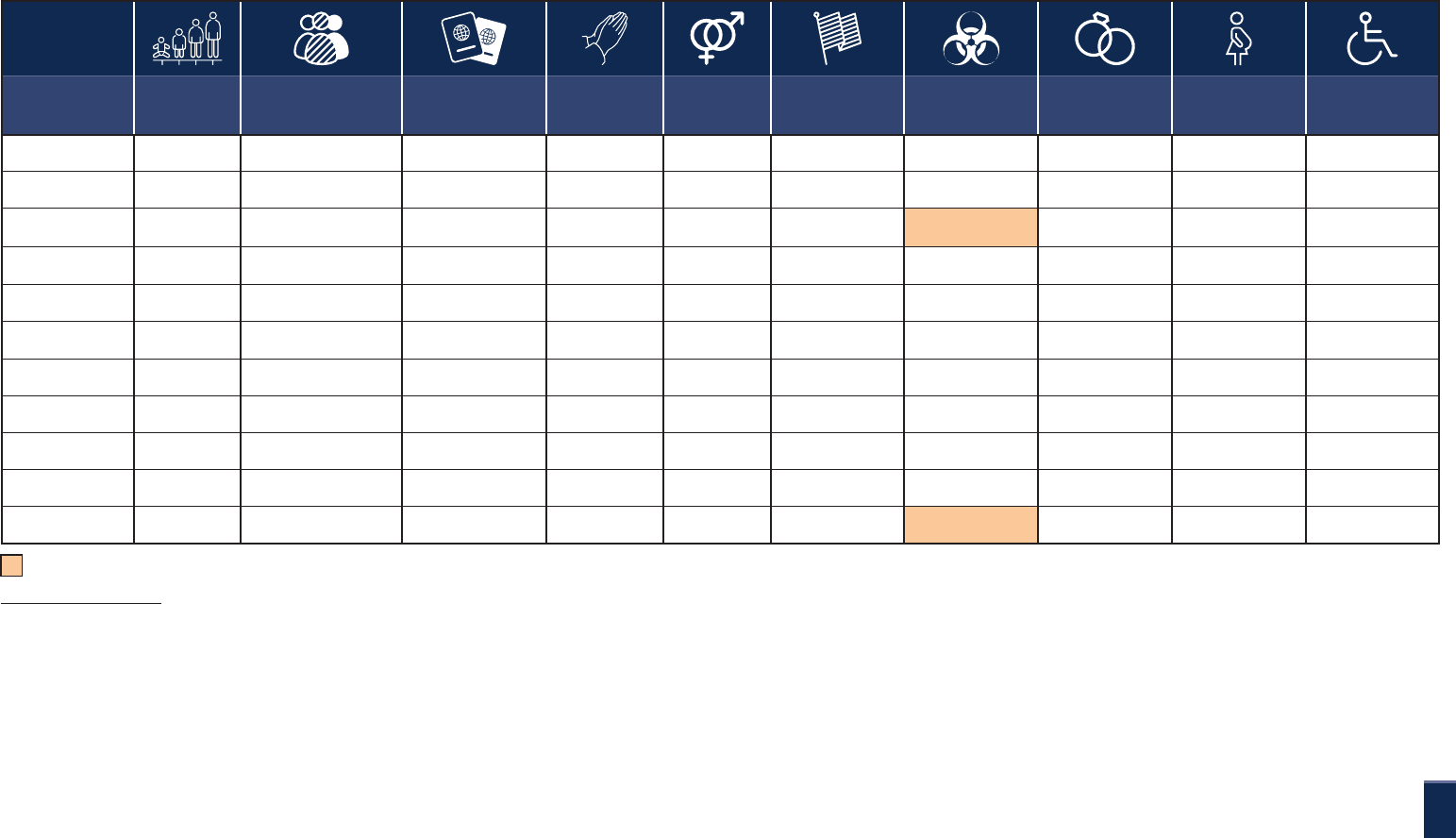
The Busy Employer’s Guide - Asia Pacific
5
Age Nationality /
Race / Ethnicity
Immigration
Status
Religion Gender Sexual
Orientation
Infectious
Disease
15
Marital
Status
Pregnancy Disability
AUSTRALIA
ü ü ü ü ü ü ü ü ü ü
CHINA
ü ü ü ü ü ü ü
HONG KONG
ü ü
ü
16
ü ü ü
INDONESIA
17
ü ü ü ü
JAPAN
ü ü ü ü ü
MALAYSIA
18
PHILIPPINES
ü ü ü ü ü ü ü
SINGAPORE
ü ü ü ü ü ü ü
TAIWAN
ü ü ü ü ü ü ü ü ü ü
THAILAND
ü ü ü ü ü ü ü
VIETNAM
19
ü ü ü ü ü ü
Employment Discrimination
An overview of prohibited grounds for employment discrimination per country. A risk heat map for prohibited discriminatory acts shows
anoverview of the regulatory levels per jurisdiction.
Countries with laws prohibiting employment discrimination on the following grounds:
15 The scope of infectious disease varies from country to country.
16 Hong Kong law does not include a specific protection in relation to HIV / AIDS, however the prohibition against disability discrimination expressly states that a person’s HIV-positive status is not an infectious disease for which a person may
lawfully be discriminated against.
17 Indonesia also prohibits employment discrimination on the grounds of political alliance.
18 The Malaysian Federal Constitution, which prohibits certain acts of discrimination, does not govern private agreements between individuals. There have been proposals to introduce employment discrimination laws in Malaysia but no bills have
been logged in the gazette thus far.
19 No sophisticated set of anti-discrimination laws yet, except with regard to gender-based discrimination. The main policy prohibits discrimination on the ticked grounds.
Colored tick boxes prohibit discrimination for individuals with HIV/AIDS only

The Busy Employer’s Guide - Asia Pacific
6
Philippines
Indonesia
Singapore
Malaysia
Thailand
Vietnam
Taiwan
Japan
Hong Kong
Australia
China
AUSTRALIA
Employees may bring claims against an employer for discrimination on unlawful grounds.
Such compensation is uncapped in most jurisdictions.
CHINA
While discrimination cases may be reported in the press, successful claims are rare
andthedamages awarded aregenerally very low.
HONG KONG
An employer who is found guilty of discrimination will be liable for damages, including
injury to feelings. High awards for discrimination claims (up to almost HKD3million)
havebeen made in Hong Kong, but are relatively rare.
INDONESIA
While Indonesia does not have a specific law on discrimination, the Labor Law imposes
administrative sanctions for violation of provisions prohibiting workplace discrimination,
which may include temporary closure or revocation of license to operate.
JAPAN
Discrimination may potentially have quite a significant impact on an employer’s
reputation. Genderdiscrimination claims are not very common but would draw
mediaattention if filed.
MALAYSIA
There are currently no equal pay or employment-discrimination-related statutes, however
workplace discrimination could result in a constructive dismissal claim. Therehave been
proposals to introduce employment discrimination laws in Malaysiabut no bills have been
logged in the gazette thus far.
PHILIPPINES
While discrimination is generally prohibited, discrimination claims are not common in the
Philippines. In most cases, an employee may instead lodge a complaint for illegal dismissal
or constructive dismissal.
SINGAPORE
The Ministry of Manpower adopts the twin approach of advisory and deterrence with
the cooperation of its Tripartite Partners. Complaints of alleged discriminatory workplace
practices have been met with warnings and revocation of work pass privileges, albeit on
alimited number of cases.
TAIWAN
This is an important topic in Taiwan although there are not many significant examples/
cases relating to discrimination. There is a significant reputational risk if claims are
brought against an employer for discrimination as well aspotential personal liability
for wrongdoers. Significant fines (between NT$300,000 and NT$1,500,000) may be
imposed.
THAILAND
Criminal penalties including a fine of up to THB 20,000 may be imposed for violations.
VIETNAM
Employers who breach anti-discrimination regulations are subject to administrative
sanctions. However, Vietnam has not yet developed a sophisticated legal framework
toaddress discrimination, leading to low enforcement in practice.
Risk of regulation for instances of discrimination
Risk Rating
The following ratings will be used to represent each level of risk:
high risk - significant implications, and can be difficult or costly to mitigate
medium to high risk - significant implications, but with mitigations can be managed
medium risk - some degree of risk and mitigations required but these are generally reasonable and achievable
low to medium risk - potential area of risk and some mitigations required, but these are reasonable and achievable
low risk - limited or no degree of risk and limited / no mitigations required
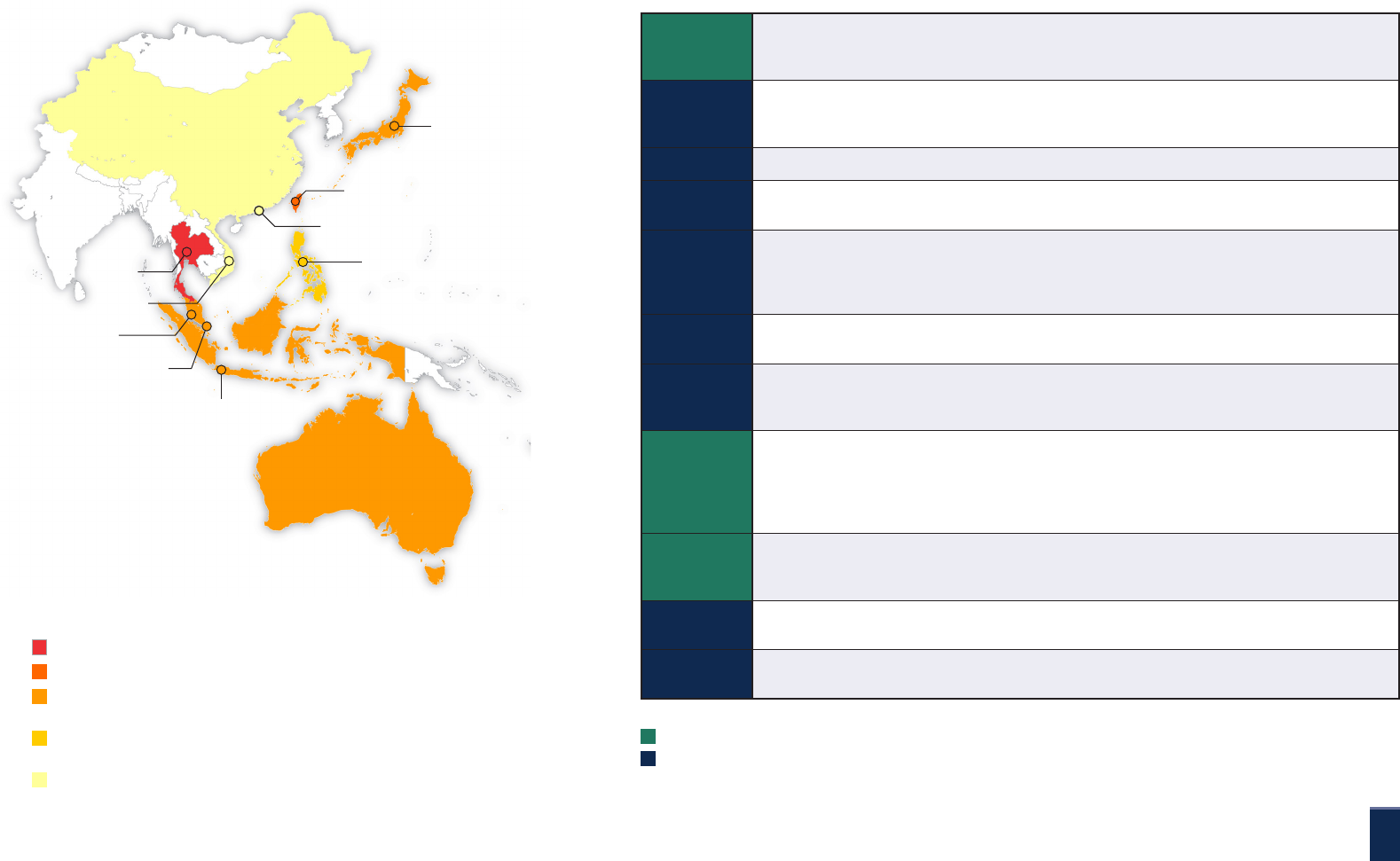
The Busy Employer’s Guide - Asia Pacific
7
Philippines
Indonesia
Singapore
Malaysia
Thailand
Vietnam
Taiwan
Japan
Hong Kong
Australia
China
AUSTRALIA
Claims may be brought under the Fair Work Act 2009 (Cth) in relation to bullying or harassment.
Employers may be vicariously liable for the acts of their employees absent proper policies and
training inplace.
CHINA
There are no specific legal rules on bullying, although such behavior has serious effects on employee
morale. There are some multinational companies in China that have implemented anti-bullying
policies, but very few have grievance procedures.
HONG KONG
There is no anti-bullying legislation in Hong Kong.
INDONESIA
While there are no specific legal rules on bullying, an employee may have cause to terminate his/her
employment if the employer commits certain prohibited acts, e.g., assault / humiliation of employee.
JAPAN
Japanese courts do not tend to award a large amount of damages for harassment/bullying.
However, such harassment/bullying claims have caused significant reputational damage to
companies in a number of cases. A new law which sets forth obligations for the employers to take
measures against workplace bullying is expected to be enacted.
MALAYSIA
There are no harassment/bullying-specific laws in Malaysia. However, if complaints by employees are
not properly addressed, the employer may be exposed to constructive liability risk.
PHILIPPINES
While there is no specific law prohibiting workplace bullying, an employee who is subjected to
harassment/bullying may claim that he/she is being constructively dismissed and expose the
employer to liability for illegal dismissal.
SINGAPORE
Harassment within and outside the workplace is an offense under the Protection from Harassment
Act (POHA), which protects employees from harassment and related anti-social behaviour through
the imposition of criminal sanctions, and also provides a range of self-help measures and civil
remedies for victims of harassment. The Tripartite Advisory on Managing Workplace Harassment
(TAMWH) serves as a guide for employers and employees to manage workplace harassment.
TAIWAN
According to the Occupational Health and Safety Act (OSHA), employers should implement adequate
safety and health measures to prevent their employees from suffering wrongful physical or mental
harm caused by the actions of others. Significant fines may be imposed.
THAILAND
Although there is no specific legislation on work place bullying, there is still a risk that the employees
may file a claim in court against the wrongdoer based on the general civil and criminal laws.
VIETNAM
Vietnam’s main policy generally prohibits maltreatment of employees but there are no specific
regulations addressing bullying at the workplace, leadingto low enforcement in practice.
Bullying
A quick guide to which countries have and do not have specific legislation prohibiting workplace bullying. A risk heat map for workplace
bullying shows an overview ofthe regulatory levels per jurisdiction.
Countries WITH legislation prohibiting workplace bullying
Countries WITHOUT legislation prohibiting workplace bullying
Risk Rating
The following ratings will be used to represent each level of risk:
high risk - significant implications, and can be difficult or costly to mitigate
medium to high risk - significant implications, but with mitigations can be managed
medium risk - some degree of risk and mitigations required but these are generally
reasonable and achievable
low to medium risk - potential area of risk and some mitigations required, but these
are reasonable and achievable
low risk - limited or no degree of risk and limited / no mitigations required

The Busy Employer’s Guide - Asia Pacific
8
Philippines
Indonesia
Singapore
Malaysia
Thailand
Vietnam
Taiwan
Japan
Hong Kong
Australia
China
AUSTRALIA
Claims may be brought under the Fair Work Act 2009 (Cth) or anti-discrimination legislation in relation
to sexual harassment. Employers may be vicariously liable for acts of their employees absent proper
policies and training in place. Such compensation is uncapped in most jurisdictions.
CHINA
20
Successful sexual harassment claims are still rare, and damages awarded are generally very low.
However, they are occasionally reported in the press and generally impact employee relations.
HONG KONG
While sexual harassment is prohibited in Hong Kong and the risk for damages is substantial
(nomaximum cap), the low frequency of claims and relatively high evidentiary threshold qualify
thisjurisdiction as low risk.
INDONESIA
While there are no specific legal rules on sexual harassment, an employee may have cause to terminate
his/her employment ifthe employer commits acts which may fall under the definition of sexual
harassment. Criminal penalties may apply.
JAPAN
Japanese courts do not tend to award a large amount of damages for harassment/bullying. However,
such harassment/bullying claims have caused significant reputational damage to companies in a number
of cases. NB: Japan is not a common law jurisdiction.
MALAYSIA
The Employment Act requires all employers to investigate any sexual harassment complaints made by
an employee. If sexual harassment is proven, disciplinary action may be taken against the wrongdoer.
PHILIPPINES
21
The Philippines has an anti-sexual harassment law and requires employers to have an anti-sexual
harassment policy in the workplace, including a procedure for investigating cases of sexual
harassment. Criminal penalties and fines may apply.
SINGAPORE
Harassment within and outside the workplace is an offense under the Protection from Harassment
Act (POHA), which protects employees from harassment and related anti-social behaviour through the
imposition of criminal sanctions, and also provides a range of self-help measures and civil remedies for
victims of harassment. The Tripartite Advisory on Managing Workplace Harassment (TAMWH) serves
as a guide for employers and employees to manage workplace harassment.
TAIWAN
In Taiwan, employers with 30 or more employees are legally required to have an anti-sexual
harassment policy and complaints procedure in place. Significant penalties for violation and risk
ofpersonal liability for employer may apply.
THAILAND
Thai labor laws prohibit sexual abuse, sexual intimidation and sexual nuisance toward employees.
Underthe Labour Protection Act, a fine of up to THB 20,000 may be imposed to offenders.
VIETNAM
Vietnam’s Labor Code prohibits sexual harassment at the workplace. However, there is no sophisticated
set of anti-harassment laws yet.
Risk Rating
The following ratings will be used to represent each level of risk:
high risk - significant implications, and can be difficult or costly to mitigate
medium to high risk - significant implications, but with mitigations can be managed
medium risk - some degree of risk and mitigations required but these are generally reasonable and achievable
low to medium risk - potential area of risk and some mitigations required, but these are reasonable and achievable
low risk - limited or no degree of risk and limited / no mitigations required
Sexual Harassment
A quick guide to which countries have and do not have
specific legislation prohibiting sexual harassment. A risk
heat map for sexual harassment shows an overview
ofthe regulatory levels per jurisdiction.
Countries WITH legislation prohibiting sexual harassment
Countries WITHOUT legislation prohibiting sexual harassment
20 Sexual harassment laws are gender-specific, designed to protect women.
21 Sexual harassment laws are position-specific, designed to protect subordinates.

The Busy Employer’s Guide - Asia Pacific
9
Sickness and Injury
A quick guide to statutory sick leave entitlements, work injury insurance requirements, and protection from termination during sickness/injury leave.
STATUTORY ENTITLEMENTS DURING SICKNESS WORK INJURY INSURANCE REQUIRED? PROTECTED FROM TERMINATION DURING LEAVE?
AUSTRALIA
• 10 days per year
ü û
CHINA
• Depends on employee’s years of service: 1) in the Chinese
workforce and 2)withthe current employer; local regulations
mayapply
ü ü
HONG KONG
• 2 paid sickness days per completed month of employment
duringthe first 12months, then 4 paid sickness days for each
completed month thereafter (toamaximum of 120 days)
ü
ü
Except for summary dismissal due
toseriousmisconduct
INDONESIA
• Sickness pay is allowed as such:
- 1st four months of illness: 100% of salary
- 2nd four months of illness: 75% of salary
- 3rd four months of illness: 50% of salary
- each subsequent month of illness: 25% of salary
(untiltermination of employment)
û
ü
An employer may terminate an employee who
hasbeencontinuously sick for 12 months.
JAPAN
• No statutory sick leave; depends on employer’s discretion
ü
ü
Only for work related injury/ illness
MALAYSIA
Protected Employees
22
• Hospitalization recommended - 60 days paid sick leave per year
including non-hospitalization leave
• Hospitalization not recommended - 14 to 22 days paid sick leave
depending onlength of service
Non-Protected Employee - sick leave depends on the terms of the
employment contract
ü
ü
Only for maternity leave unless the termination
ispursuant to a closure of business
22 Employees in Malaysia are generally divided into two categories — those who fall within the ambit of the Malaysian Employment Act (EA) for West Malaysia; and those who fall within the ambit of the Ordinances for East Malaysia
(collectively, the EA and the Ordinances will be referred to as “Legislation”). Those covered by the Legislation are referred to as “Protected Employees,” and those falling outside the Legislation are referred to as “Non-Protected Employees.”
A Protected Employee is an individual: (i) whose wages do not exceed the prescribed threshold amount (MYR 2,000 for West Malaysia and MYR 2,500 for East Malaysia) per month, irrespective of occupation; or (ii) who is engaged in
specific work (e.g., manual laborer, manual labor supervisor or commercial motor vehicle operator), regardless of wage amount.

The Busy Employer’s Guide - Asia Pacific
10
STATUTORY ENTITLEMENTS DURING SICKNESS WORK INJURY INSURANCE REQUIRED? PROTECTED FROM TERMINATION DURING LEAVE?
PHILIPPINES
• No statutory sick leave but is common practice to provide
10-15days of paid sick leave
û ü
SINGAPORE
• Outpatient non-hospitalization leave - 5 to 14 days
• Hospitalization leave - 15 to 60 days
ü
• employees doing manual work,
regardlessofsalary level
• employees doing non-manual work,
earning SGD 1,600 or less a month
ü
TAIWAN
• Half pay for the first 30 days of sick leave; no sick pay thereafter
ü ü
THAILAND
• 30 paid working days of sick leave per year
û û
VIETNAM
• The state social insurance fund pays for the employees’ sick
days using a formula which factors in the employee’s salary
andnumber of sick leave days
û
ü
Except for long-term disease/injury where the
employee’scapacity to work does not recover
afterastatutory treatment period.
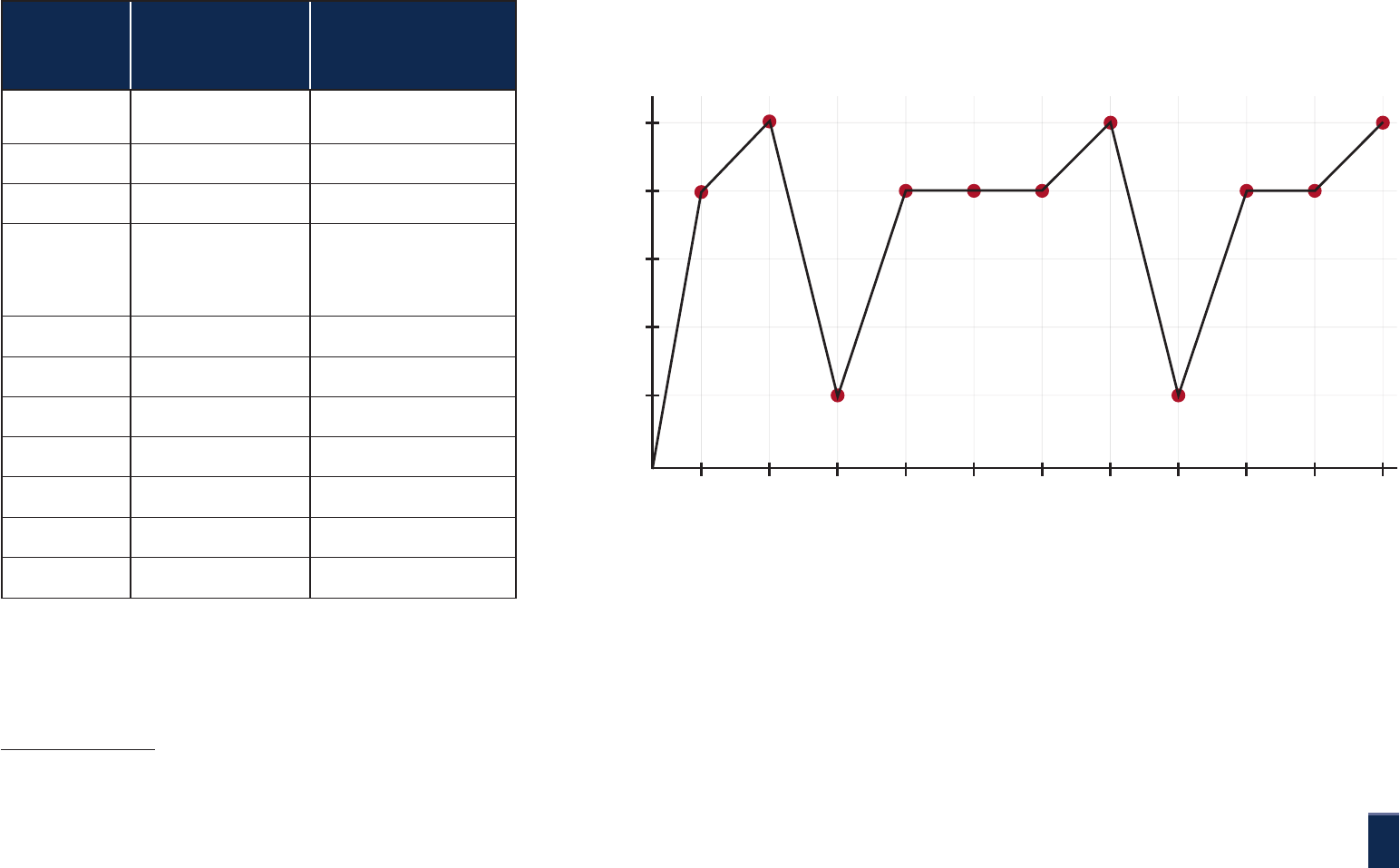
The Busy Employer’s Guide - Asia Pacific
11
Terminations
A quick guide to employee terminations, identifying lawful grounds for termination, statutory notice periods, acceptability of payments inlieu
ofnotice, protections from termination and consultation requirements for redundancy.
Is a valid reason
required to terminate
employees?
Is “payment in
lieu ofnotice”
(PILON)allowed?
AUSTRALIA
ü
subject to agreement
ofthe parties
CHINA
ü ü
HONG KONG
ü ü
INDONESIA
ü
subject to agreement
of the parties and does
not replace statutory
termination payment
JAPAN
ü ü
MALAYSIA
ü ü
PHILIPPINES
ü û
SINGAPORE
û ü
TAIWAN
ü ü
THAILAND
û ü
VIETNAM
ü
ü
23
23 For termination, the employer is explicitly required to serve prior statutory notice, such that whether an employer can pay employees in lieu of notice isuncertain. PILON is generally accepted
aslong as there is no challenge fromtheemployees.
How difficult is it to terminate employees in Asia Pacific?
5
4
3
2
1
0
AUSTRALIA
DIFFICULTY LEVEL
CHINA
HONG KONG
JAPAN
INDONESIA
MALAYSIA
SINGAPORE
THAILAND
PHILIPPINES
TAIWAN
VIETNAM

The Busy Employer’s Guide - Asia Pacific
12
Serious
misconduct
Breach of contract /
employer's policies
Willful
disobedience to
lawful orders
Gross neglect
ofduties
Incompetence/
poorperformance
Commission
ofcriminal
offense
Disease /
Injury
Redundancy Fraud against
employer
AUSTRALIA
ü ü ü ü ü ü ü
CHINA
ü ü ü ü ü ü
24
ü
HONG KONG
ü ü ü ü ü ü ü ü ü
INDONESIA
ü ü
25
ü ü
26
JAPAN
ü ü ü ü ü ü ü ü
27
ü
MALAYSIA
ü ü ü ü ü ü
28
ü
29
ü ü
PHILIPPINES
ü ü ü ü ü ü
30
ü ü ü
SINGAPORE
No reason required to terminate an employee as long as requisite notice period or payment in lieu of notice is given.
TAIWAN
ü ü ü ü ü ü ü
THAILAND
The employer can generally terminate an employee at any time for justifiable reasons subject to compliance with the required procedures and statutory payments.
VIETNAM
31
ü ü ü ü ü ü
32
ü
33
ü ü
Lawful grounds for termination
24 Only if non-work-related and still cannot come back to work after statutory medical treatment period expires.
25 Upon finding of guilt by a court within 6 months of detention by the authorities.
26 Termination for efficiency measures (which is the reason closest to “redundancy” in the law) requires the
companytobe closed down. The commonly understood “redundancy” (i.e. reducing the number of workforce
whilekeeping thecompanyrunning) is not a reason for termination stated in the Labor Law.
27 In very limited situations, i.e., if there is economic hardship.
28 Depends on the offense committed, i.e., impacts the position or tarnishes the reputation of the company.
29 Employee’s condition must be such that it severely cripples the employee’s ability to perform his job responsibilities.
30 Must be committed against the employer or immediate member of the employer’s family or duly authorized
representative.
31 Grounds under columns 1-4 and 8 apply if listed as a cause for dismissal under the company’s Internal Labor
Regulations (ILRs).
32 Must have been sentenced by a court to prison or capital punishment.
33 Must be a long-term disease/injury where the employee’s capacity to work does not recover after a statutory
treatment period.

The Busy Employer’s Guide - Asia Pacific
13
AUSTRALIA
1 to 4 weeks depending on employee's length of service.
No notice required for instances of summary dismissal.
CHINA
30 days - termination with severance payable.
No notice - termination without severance payable.
HONG KONG
1 month unless otherwise stated in the employment contract (but not less than 7 days), with option to give payment in lieu of notice.
No notice - Within 1st month of probationary period.
7 days - After the 1st month of the probationary period but before the completion of the probation period.
INDONESIA
None stipulated in the law. Employers must either reach a mutually agreed termination with the employee or obtain court approval to terminate an employee. Consider period
required to conduct bipartite negotiations with employee/labour union, mediation (if needed) and submission of the decision to the Industrial Relations Court for approval.
JAPAN
30 days, with option to give payment in lieu of notice.
MALAYSIA
Notice period is based on the agreement of the parties.
Except:
1. Protected Employees - in cases involving a change in the ownership of business or redundancy, minimum notice periods under the EA (depending on employee’s
lengthof service) apply.
2. Dismissal due to misconduct - no notice or payment in lieu of notice.
PHILIPPINES
Termination due to Just Cause
1. 1 written notice of charge/s to the employee with opportunity to explain (at least 5 calendar days for employee to submit explanation).
2. Hearing or conference with employee.
3. 1 written notice of termination, which can be with immediate effect.
Termination due to Authorized Cause - 1 month prior notice to employee and labor authority.
SINGAPORE
Either the employer or the employee can terminate the employee’s employment by serving the other party the required amount of notice as set out under
theEmployment Act and/or the employment agreement. Anynotice period provided beyond the statutory requirements would be on a contractual basis.
TAIWAN
Termination without cause - 10 to 30 days depending on employee’s length of service, with option to give payment in lieu of notice.
Termination with cause - no notice or payment in lieu of notice required.
THAILAND
Indefinite Period Employee - Prior notice of termination given at least one pay period in advance, on or before any payday.
No notice or payment in lieu of notice for termination due to statutory causes.
VIETNAM
3 working days to 45 calendar days depending on the type of labor contract and cause of termination. Payment in lieu of notice may be agreed upon by the parties.
Notice periods for termination

The Busy Employer’s Guide - Asia Pacific
14
Pregnancy /
maternityleave
Disability Sick Leave due to
disease or injury
Vacation /
annual leave
Union membership /
non-membership
Filing of complaint against employer /
Has outstanding compensation claim
Within 5 years from
retirement age
AUSTRALIA
ü ü ü ü ü ü
CHINA
ü ü ü
34
ü ü
35
HONG KONG
ü ü ü ü ü ü
INDONESIA
ü ü ü ü ü
JAPAN
ü ü
36
ü ü
MALAYSIA P
M
37
ü ü
38
ü
39
ü ü ü
40
PHILIPPINES
ü ü
41
ü ü
SINGAPORE
ü ü ü
TAIWAN P
M
42
ü ü
THAILAND
ü ü ü
VIETNAM
31
ü ü
43
ü ü
P - Pregnancy M - Maternity Leave
Protected employees
Legends:
An employee may not be terminated: By reason of | During | Both by reason of and during
34 Only for work injury; if due to non-work-related injury/illness, protected only during statutory
medicaltreatmentperiod.
35 Applies only if employee has at least 15 years of service with the company.
36 Only for work-related injury/illness.
37 Termination during maternity leave is not allowed except for closure of business.
38 Unless it is due to prolonged illness such that the employment contract can no longer be fulfilled.
39 Unless frequent unauthorised vacation is taken without reasonable excuse.
40 Unless it is with employee’s consent.
41 If employee can perform the work.
42 Except if the employer cannot continue business operations due to force majeure events and with prior approval
from a competent authority.
43 Except for long-term disease/injury where the employee’s capacity to work does not recover after a statutory
treatment period.
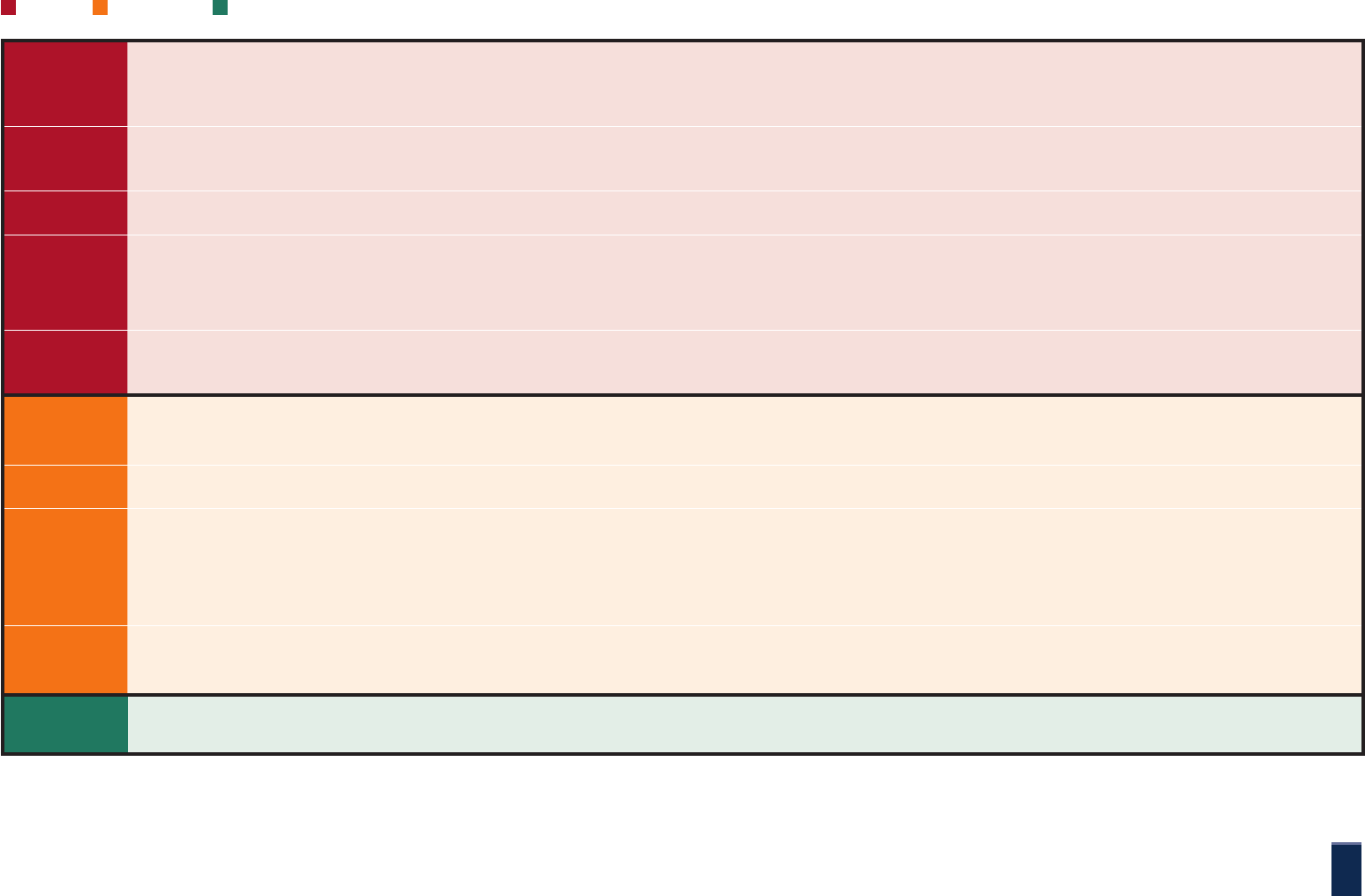
The Busy Employer’s Guide - Asia Pacific
15
China
Ø 30 days prior to termination - consult with company union or all employees if no union in case terminating 20 or more employees, or 10% or more of the
workforce. If this threshold is not met, then company would have to consult with individual impacted employee about ways to amend thecontract so it
cancontinue to be performed and then may only terminate if consultation fails.
Vietnam
Ø 30 days prior to termination - consult with union regarding the labor use plan and submit written notice of the redundancy to the local labor authority,
providing mandatory details of the redundancy (supporting documents may be required)
Taiwan
Ø 60 days prior to termination - may have to submit a severance plan if certain thresholds are met (depending on size of company and numberof redundancies)
Indonesia
Ø Labor authorities may need reason for redundancy exercise (supporting documents may be required).
Ø Bipartite negotiations for settlement with each employee within 30 days of notification
Ø Court approval is required if employee refuses a mutual termination.
Japan
Ø No requirement to consult but redundancy is not a valid reason for dismissal unless there is exceptional economic hardship and legal proceduresare
followed,which includes consultation with employees/union. Generally, voluntary resignation is safer and recommended thanaunilateral termination.
Singapore
Ø Notice to at last 5 employees of their retrenchment within any 6-month period
Ø Notice to labour authority within 5 working days of notice to employee
Australia
Ø Depends on industrial instruments (enterprise agreements or modern awards)
Thailand
Ø No specific requirements on termination based on redundancy. General notice periods will apply.
Ø 60 days prior to termination - notification requirements to labour authority and employees (for introduction of new technology and machinery resulting
inredundancy)
Ø Court approval required if employee is an employee committee member
Malaysia
Ø No standalone consultation requirements unless stated in collective bargaining agreement. Consultation is recommended.
Ø The Malaysian Code of Conduct for Industrial Harmony (“Code”) sets out guidelines for retrenchment.
Hong Kong
Philippines
Ø No statutory consultation requirements but recommended that redundancies are communicated effectively to employees
Redundancies: Consultation requirements
High Medium Low
Complexity
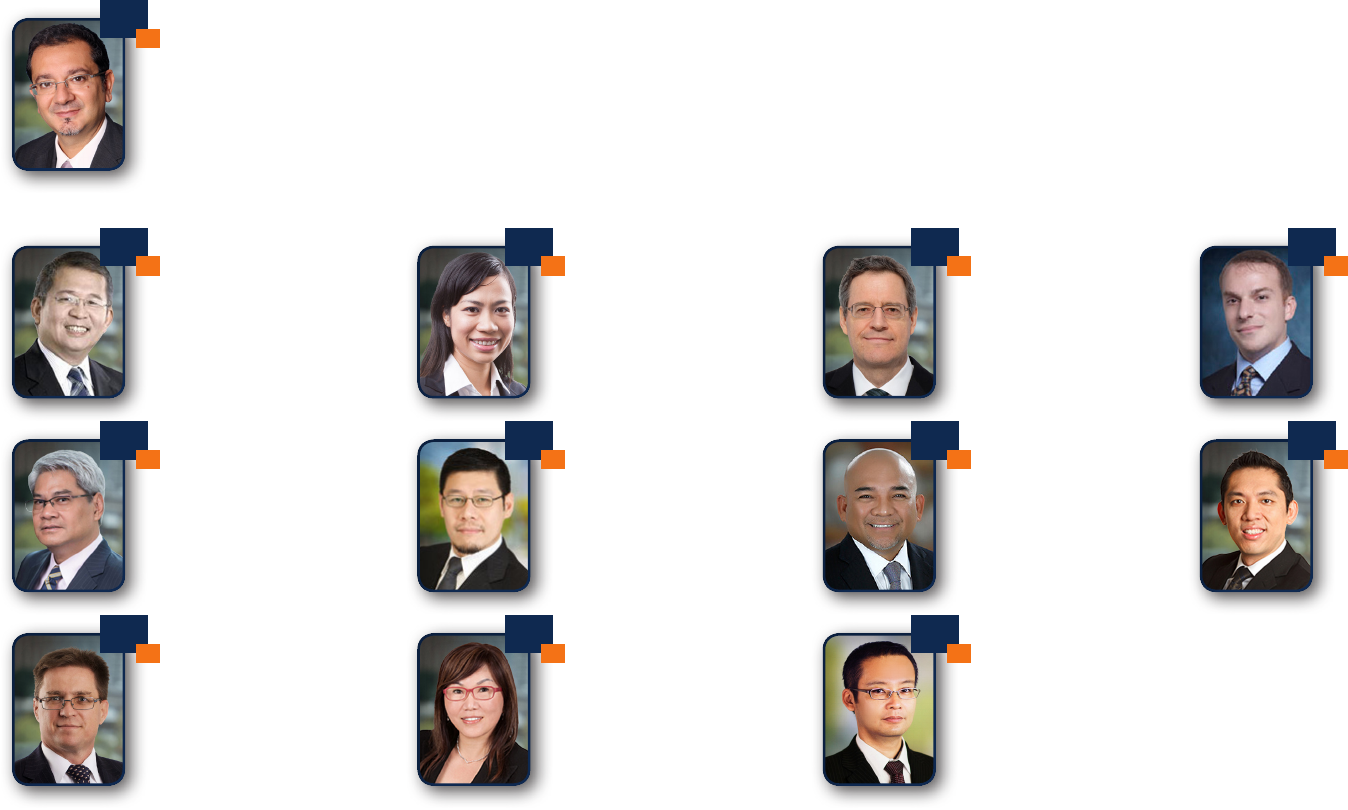
Key Contacts
Michael Michalandos
Chair, Asia Pacific Employment and Compensation
Sydney
michael.michalandos@bakermckenzie.com
Thuy Hang Nguyen
Ho Chi Minh City
thuyhang.nguyen
@bakermckenzie.com
Rowan McKenzie
Hong Kong
rowan.mckenzie
@bakermckenzie.com
Seraphim Ma
Taipei
seraphim.ma
@bakermckenzie.com
© 2019 Baker McKenzie. All rights reserved. Baker & McKenzie International is a global law firm with member law firms around the world. In accordance with the common terminology used in professional service organizations, reference to a “partner” means a person who is a partner or equivalent in such
a law firm. Similarly, reference to an “office” means an office of any such law firm.
This may qualify as “Attorney Advertising” requiring notice in some jurisdictions. Prior results do not guarantee a similar outcome.
www.bakermckenzie.com
Paul Brown
Sydney
paul.brown
@bakermckenzie.com
Jonathan Isaacs
Hong Kong
jonathan.isaacs
@bakermckenzie.com
Gil Zerrudo
Manila
gil.zerrudo
@quisumbingtorres.com
Timur Sukirno
Jakarta
timur.sukirno
@bakermckenzie.com
Kelvin Poa
Singapore
kelvin.poa
@bakermckenzie.com
Tomohisa Muranushi
Tokyo
tomohisa.muranushi
@bakermckenzie.com
Suriyong Tungsuwan
Bangkok
suriyong.tungsuwan
@bakermckenzie.com
Brian Chia
Kuala Lumpur
brian.chia
@wongpartners.com
APAC Super Summaries_INT136432_FSalvador-Villeno_FIFTH DRAFT
